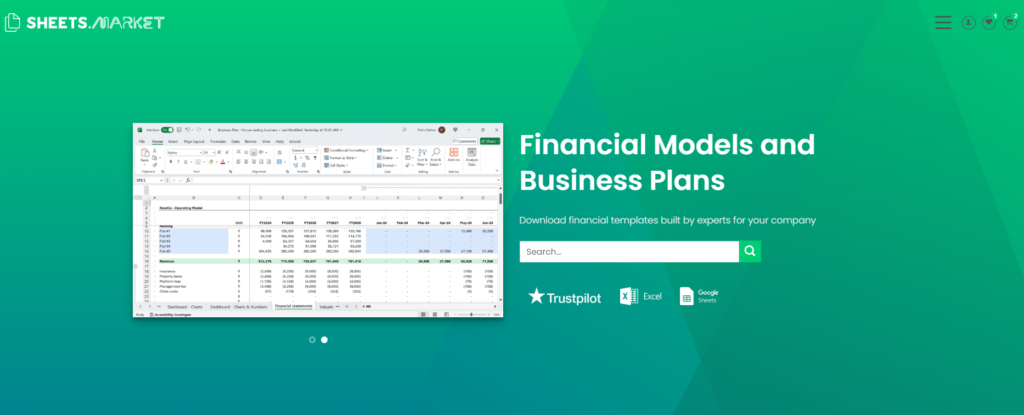Business Planning & Strategy, Financial Projections
Stock Valuation in Excel: Forecasting & Key Financial Metrics
Stock valuation requires methodological discipline. Excel enables structured, transparent, and replicable valuation frameworks – if models are designed with clarity and control. Poorly structured models obscure assumptions, introduce error, and misguide decisions. Structured architecture is non-negotiable.
Model Structure: Critical Components
A robust Excel model must separate logic, inputs, and outputs. Each module should serve a distinct function:
| Module | Purpose |
|---|---|
| Assumptions | Centralized control of variables: revenue growth, margins, WACC, terminal value |
| Financial Statements | Projected income statement, balance sheet, and cash flows |
| Valuation Engine | Core logic for DCF and relative valuation methods |
| Sensitivity Analysis | Quantifies valuation impact of key variable shifts |
| Output Summary | Consolidated KPIs: enterprise value, equity value, multiples |
Model discipline avoids circular references, hardcoded outputs, and disorganized inputs which are common causes of misvaluation.
Valuation Methodologies: Execution in Excel
Discounted Cash Flow (DCF) calculates enterprise value by forecasting free cash flow and discounting it using WACC. Inputs must include operating assumptions (revenue, EBITDA margin), CapEx, working capital flows, and terminal value (Gordon Growth or Exit Multiple).
Comparable Company Analysis estimates value using market multiples from relevant peers. Accuracy depends on tight peer selection and normalized financials. Multiples used: EV/EBITDA, P/E, EV/Sales.
Both methods should be included. DCF provides intrinsic value; comps ensure market alignment.
Model Integrity: Non-Negotiable Controls
All models must be dynamically linked to assumptions. Static overrides are prohibited. Inputs should be clearly flagged and housed in a dedicated sheet. Versioning ensures auditability. Error checks (e.g., balance validation, cash reconciliation) flag structural issues early.
Documentation should be embedded within the model and not in footnotes or separate files. Logic must be traceable in real time.
Application: Valuation as a Strategic Tool
A valuation model is not a theoretical tool. It directly informs investment decisions (buy/sell), M&A (target pricing, synergy sizing), and financial strategy (capital budgeting, forecasting). Sensitivity tables (e.g., WACC vs terminal growth) surface risk boundaries. Scenario analysis quantifies upside/downside asymmetry.
If valuation does not support decisions, the model has failed.
So what?
Excel remains the most flexible platform for valuation but only if models are structured with precision. Modular architecture, transparent assumptions, and methodological consistency convert spreadsheets into decision-grade tools. Anything less introduces risk, not insight.

Building a stock valuation model from scratch can be time-consuming and prone to errors. SHEETS.MARKET offers professionally designed Excel templates tailored for stock valuation, complete with pre-built formulas, charts, and scenario analysis tools. These templates not only save time but also ensure accuracy and consistency in your analysis.



